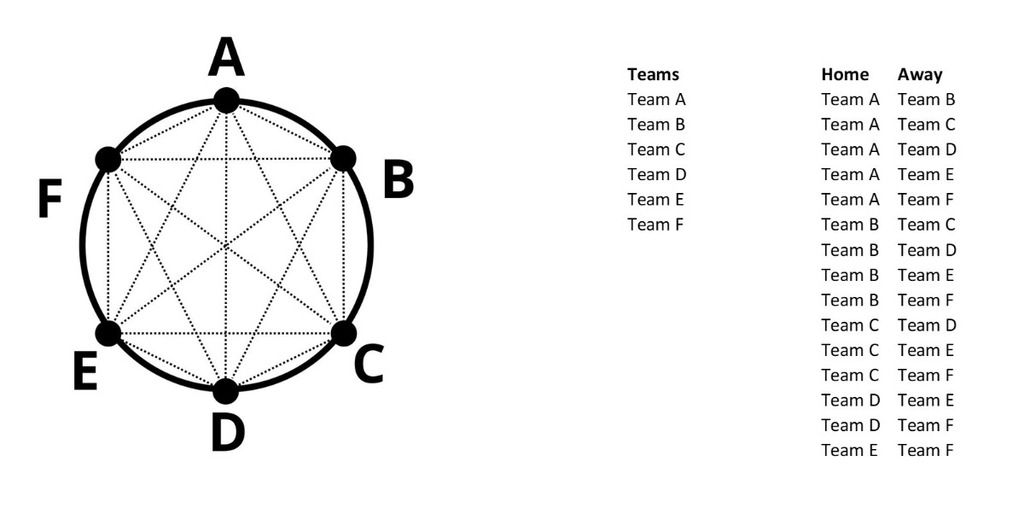How to study social behavior and dyadic interactions
Social behavior is often studied by psychology researchers using the Round Robin design, especially in dyads. It ensures that all participants in a group interact with each other.
Posted by
Published on
Thu 30 Nov. 2023
Topics

When studying social behavior and dyadic interactions in psychology research, the Round Robin design is the way to go. This methodology ensures that all participants in a group interact with each other. The Round Robin design helps researchers study the complexities of interpersonal relationships.
What is a Round Robin design?
A Round Robin design is a systematic approach used both in research and in competitions. In short, it means that each participant is given the opportunity to interact or compete with every other participant, one at a time.
In the context of psychological research, particularly in studies involving dyadic interactions, this design ensures that every possible pair of participants engages in an interaction. As a result, you have comprehensive and balanced overview of the interactions within the entire group.

What are dyadic interactions?
Dyadic interactions refer to the social exchange between two individuals, encompassing both verbal and non-verbal communication. Understanding dyadic interactions involves exploring how each individual perceives, responds to, and influences the other.
These interactions help us understand social behavior, such as friendships, romantic relationships, parent-child-interactions, and professional interactions.
Why you need the Round Robin design to study social behavior
When studying dyadic interactions, the Round Robin design is invaluable. It helps researchers understand patterns of social behavior or the relationships between behavioral strategies and social outcomes. By collecting data in groups, rather than from single dyads, their data set is more reliable.
For example, social behavior that occurs within the context of a single dyad is more prone to “noise”, like having something in common or feeling ready to engage with the other. The Round Robin design provides a more complete view of the social dynamics within the group.
Implementing the Round Robin design: an example from Dr. Erin Heerey’s research
Dr. Erin Heerey, Associate Professor at the department of Psychology of University of Western Ontario, used the Round Robin design to explore the subjective value of smiles and how they alter social behavior. Her research revealed that the valuation of polite smiles and subsequent social interactions were influenced by changes in social need.
Discover more about Dr. Erin Heerey's work in this video.
Studying social behavior with FaceReader
In the context of dyadic interaction research, especially studies similar to Dr. Erin Heerey’s, FaceReader adds more depth and objectivity to the findings. FaceReader, with its ability to accurately classify emotions and facial expressions, helps to analyze the moment-by-moment facial expressions of participants during their interactions. This helps researchers gain additional insights into the interpersonal dynamics and emotional exchanges within the group.
FREE WHITE PAPER: FaceReader methodology
Download the free FaceReader methodology note to learn more about facial expression analysis theory.
- How FaceReader works
- More about the calibration
- Insight in quality of analysis & output
The power of FaceReader: 800 hours of coding in 14 hours
Also, FaceReader classies expressions in a fraction of the time that human coders need to perform the same work. Imagine a small pilot study in which five groups of five participants each, a mere 25 participants, have a series of two 10-minute discussions in a round robin design. The resulting data would include 800 minutes of video to be coded.
Human coders would need about 800 hours to produce frame-by-frame expression classifications, whereas FaceReader would require only about 14 hours to produce the same output. Given the volume of data that Round Robin social interaction studies generate, FaceReader makes the investigation of Round Robin data possible.
Helping researchers understand social behavior
The Round Robin design ensures a comprehensive and robust dataset when studying social behavior and dyadic interactions. This helps researchers gain better insights in the complexities of human interactions and interpersonal perceptions.
FAQs: Social behavior and facial expression analysis
1. Why study social behavior?
Researchers study social behavior, emotions, and group dynamics to understand how we connect with others. Their findings help improve mental health support, workplace interactions, and social skills.
2. How does facial expression analysis help in social behavior research?
Facial expressions reveal emotions we don’t always put into words. By analyzing these expressions, researchers can track mood shifts and emotional intensity. This helps in research areas like psychology, marketing, and AI-human interaction.
3. What types of research questions can a Round Robin design help answer?
This method is great for studying interpersonal interactions in psychology studies. Researchers use it to explore questions like: Do people behave differently with different individuals? Are certain social traits, like dominance or trust, consistent across different relationships?
4. What are the challenges of using a Round Robin design?
One challenge is managing the logistics—ensuring that every participant interacts with every other participant takes time and careful planning. Data analysis can also be complicated due to the interconnected nature of the results. Specifically, researchers need the right statistical tools to separate individual effects from interaction effects.
5. Can facial expression analysis be combined with other research methods?
Yes! Researchers often pair it with eye-tracking, physiological measurements, or behavioral coding. Combining these methods helps gain better insights in human behavior.
6. What ethical concerns come with facial expression analysis?
Privacy and bias are the most common concerns in facial expression analysis. That's why researchers need to get informed consent from their participants before collecting data. They should also store facial data securely to protect participant privacy. Misinterpretation is another risk, since cultural differences affect how emotions are expressed.
Related Posts

Examining parent-adolescent interactions during a career discussion

Become and stay aware about children with autism
